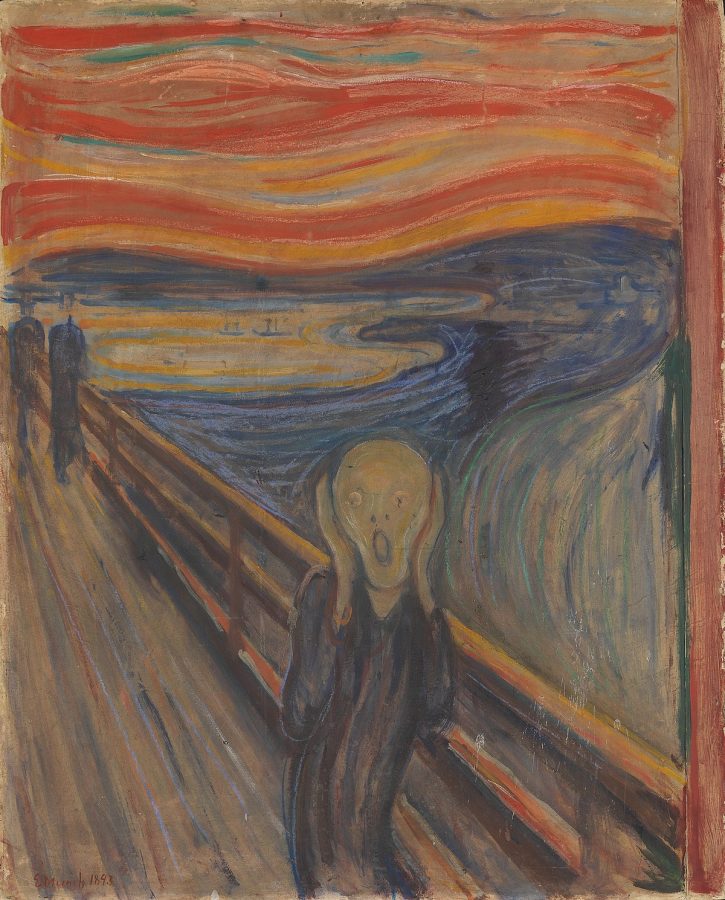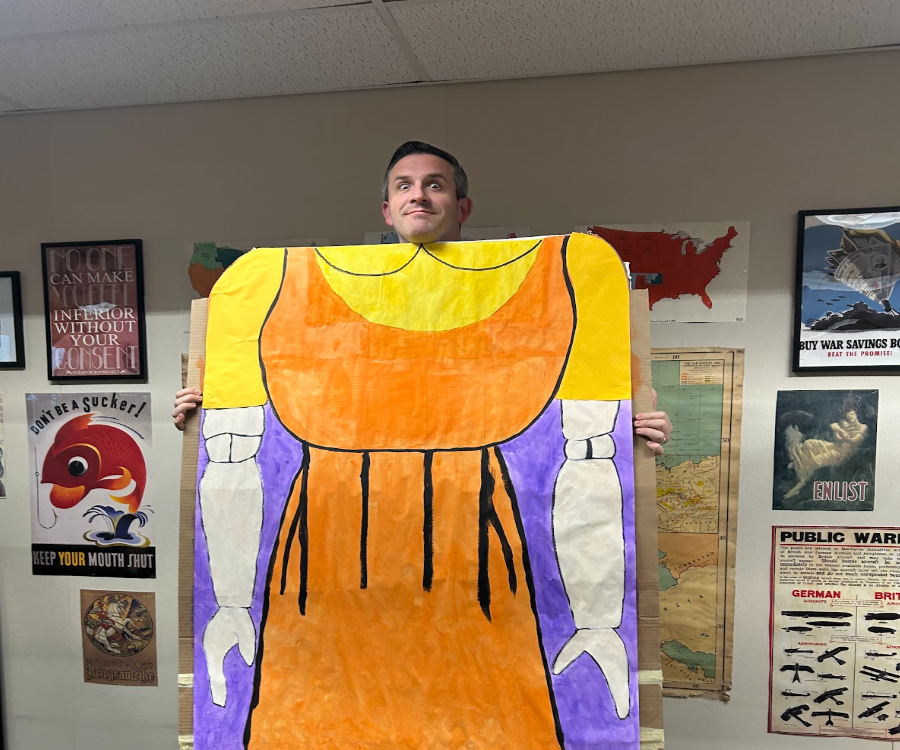Understanding Anxiety Disorders
One in three adolescents has had an anxiety disorder
September 15, 2022
Everyone deals with anxiety throughout their lives. Anxiety is the body’s normal reaction to stress. However, anxiety disorders vary in that they are characterized by repeated intrusive and uncontrollable feelings of anxiety and fear. Although the terms may be interchangeable, fear is different from anxiety. Fear is a short-lived emotional response to a direct threat and is more linked to a fight or flight response. In contrast, anxiety is considered a future-oriented, long-acting response focused on a diffuse threat. The cause of anxiety is not easily identifiable or perceived as uncontrollable or inevitable. People with anxiety disorders may avoid situations that might trigger or worsen their symptoms which significantly impair their social and occupational functions.
Anxiety disorders are among the most common mental disorders. Anxiety disorders often occur with other mental disorders such as severe depressive disorders, bipolar disorder, eating disorders or certain personality disorders. Personality traits like neurosis are also associated with anxiety disorders. This observed co-occurrence is partly due to genetic and environmental influences divided between these traits and anxiety. People with obsessive compulsive disorders also experience anxiety. Anxiety is also commonly found in those who experience severe stress, dissociative disorders, somatoform disorders, and some neurotic disorders. There are several types of anxiety disorders, including generalized anxiety disorders, panic disorders, specific phobias, agoraphobia, social anxiety disorder and separation anxiety disorder.
Generalized Anxiety Disorder
- Generalized anxiety disorder (GAD) involves long-lasting and excessive anxiety that interferes with daily activities which can be accompanied by physical symptoms, such as restlessness, feeling on edge or easily fatigued, difficulty concentrating, muscle tension or problems sleeping. GAD develops when you cannot cope well with your internal stress. These stressors can include family life, social life, work, and their own health.
Panic Disorder
- People with panic disorders suffer frequent panic attacks that bring severe physical and psychological distress. These panic attacks can last several hours and are characterized by trembling, shaking, confusion, dizziness, nausea, breathing difficulties, chills, hot flashes and/or abdominal pain. People with panic disorder experience symptoms even outside specific panic episodes that can lead to hyper-vigilance.
Specific Phobias
- Specific phobias are intense fears of or aversion to specific objects or situations. Patients know that their fear is unreasonable, but they cannot overcome it. These fears cause such distress that some people go to extreme lengths to avoid their fears. Public speaking, fear of heights and fear of flying are among the most common phobias.
Agoraphobia
- Agoraphobia is the fear of being in a situation where escape may be difficult or embarrassing, or help might not be available in the event of panic symptoms. The fear is out of proportion to the actual situation and lasts six months or more and causes problems in functioning. Those with the phobia actively avoid situations in settings such as open spaces, enclosed places, public transport, standing in lines or crowds, or being outside their homes alone.
Social Anxiety Disorder
- A person with a social anxiety disorder has significant anxiety and discomfort about being embarrassed, humiliated, rejected or despised in social interactions. Individuals with this disorder will try to avoid the situation or endure it with great anxiety. Common examples are extreme fear of speaking in public, meeting new people or eating/drinking in public. Fear or anxiety causes daily problems and lasts at least six months.
Separation Anxiety Disorder
- People with separation anxiety disorder experience excessive and unseemly levels of anxiety about separation from a person. A person with separation anxiety disorder may suffer from persistent anxiety about losing people with whom they are close too. They also may be reluctant or refuse to go out or sleep from home or without that person, or experience nightmares about separation.
People with anxiety disorders may face prejudices and stereotypes that the world believes, probably because of misunderstandings about anxiety and anxiety disorders. Some believe that anxiety disorders are not a medical condition or that people with anxiety can simply turn it off. I contacted a student on our campus, who will remain anonymous, and asked her how anxiety disorders have affected her daily life.
“I deal with panic disorder and constant overthinking. It affects my everyday life because I am always biting the inside of my mouth, shaking, tapping, picking at my fingernails, and always questioning how I smile at people, talk to someone, if someone is thinking something about me. It takes over my life and I can never fully relax without worrying.”
She goes on to illustrate the fear of an impending panic attack and how she manages the attack.
“When it comes to having panic attacks it feels like I am dying and I cannot breathe, my legs and hands go numb, and I am shaking. I cope by trying to stop the attack before it starts and distract myself. I have had therapy for other reasons and mentioned my anxiety, but I have never had an actual treatment or medication.”
The causes of anxiety disorders are currently unknown but are likely to be associated with a combination of genetic, environmental, psychological, and developmental factors. Anxiety disorders can occur in families, suggesting that a combination of genes and environmental stress can lead to disorders. Psychotherapy such as Cognitive behavioral therapy (CBT) is effective for anxiety disorders and is a first-line treatment. Psychopathological treatment can be used in parallel with CBT or can be used alone. Stress management techniques and meditation can be helpful in managing anxiety disorders. Support groups can provide a safe space to share experiences and coping strategies. Researching the disorder and helping family and friends to understand the condition better can also be helpful. Mindful programs also are effective for managing anxiety disorders, although whether meditation affects anxiety is unclear.
Medications will not cure anxiety disorders but work to relieve symptoms. The most prescribed medications are from the selective serotonin re-uptake inhibitor (SSRI) class. SSRIs or SNRIs are first-line choices for the treatment of generalized anxiety disorders and are effective while having few side effects, although they do not provide immediate relief. Antidepressants are widely used to treat anxiety disorders, such as generalized anxiety disorder, panic disorder, agoraphobia, and social anxiety disorder. Beta-blockers are sometimes used to control physical symptoms of anxiety.
If you ever need additional help, visit the Student Assistance Specialists (SAS) in the office of the N-Building Administration. SAS is a contract program through the Center for Human Services that provides short-term counselling and support to all students on campus. The school Psychologist Ms. Pettis is available in the B-building. Also, counselors are trained in social and emotional counseling and helping with schedule changes and transcripts. On Thursdays between 8:30 and 12:30, Liz Netjes, a counselor through Youth for Christ Central Valley (YFC) is on campus to support students. SAS and YFC have permission slips to attend multiple sessions.





William Liu • Sep 21, 2022 at 2:30 pm
This article really makes me think and understand more about the Anxiety disorder.